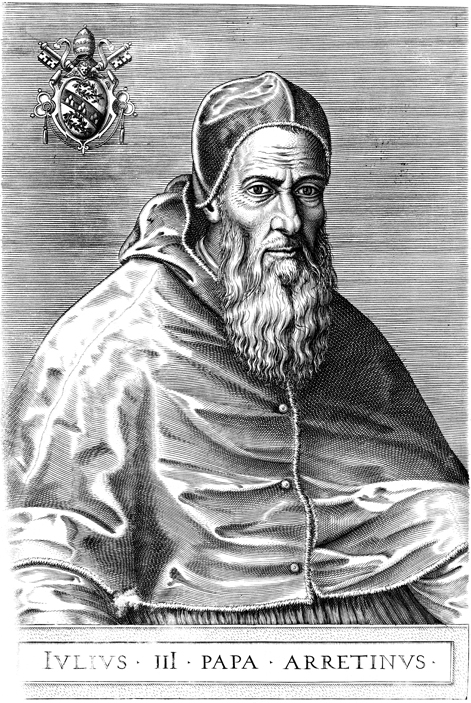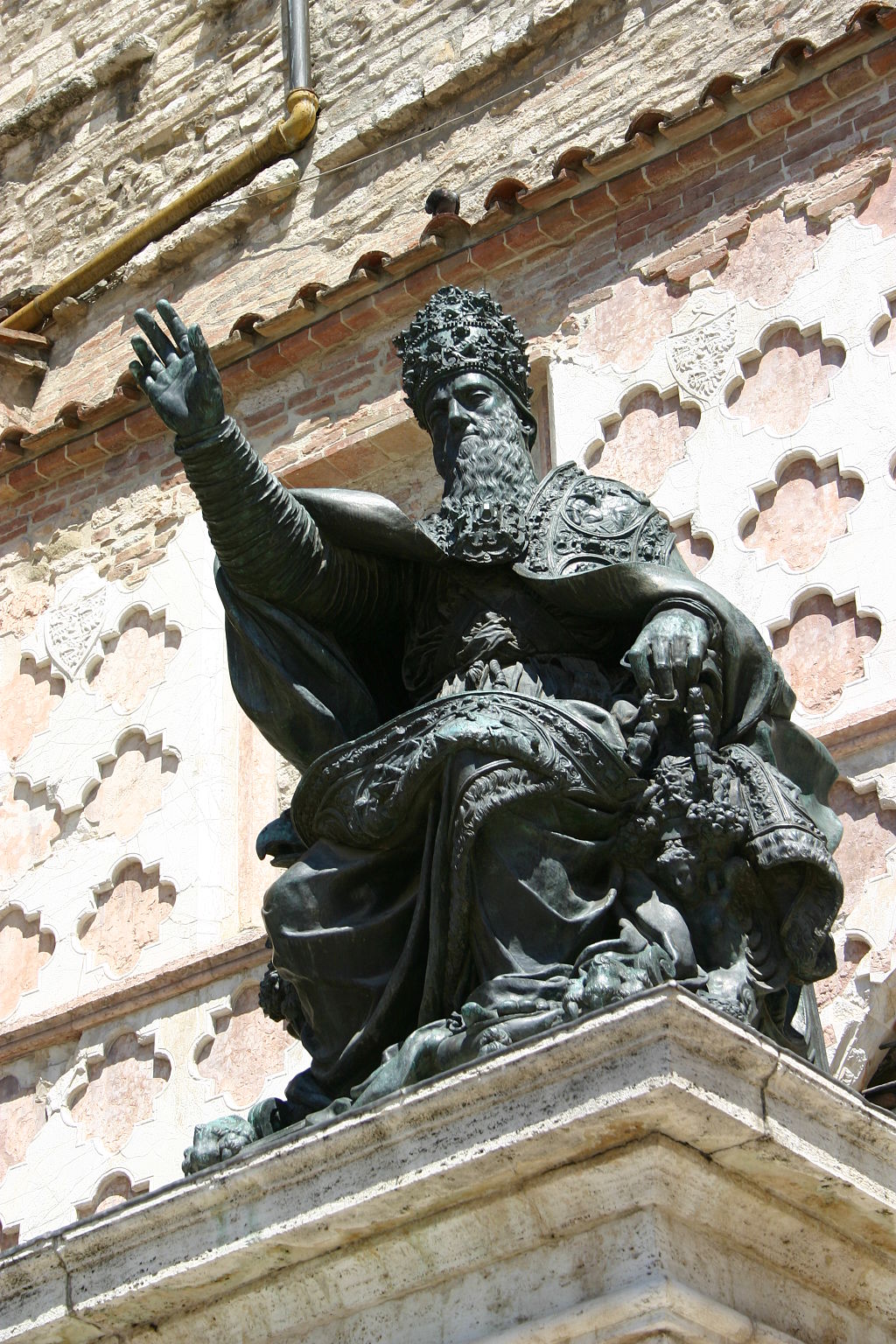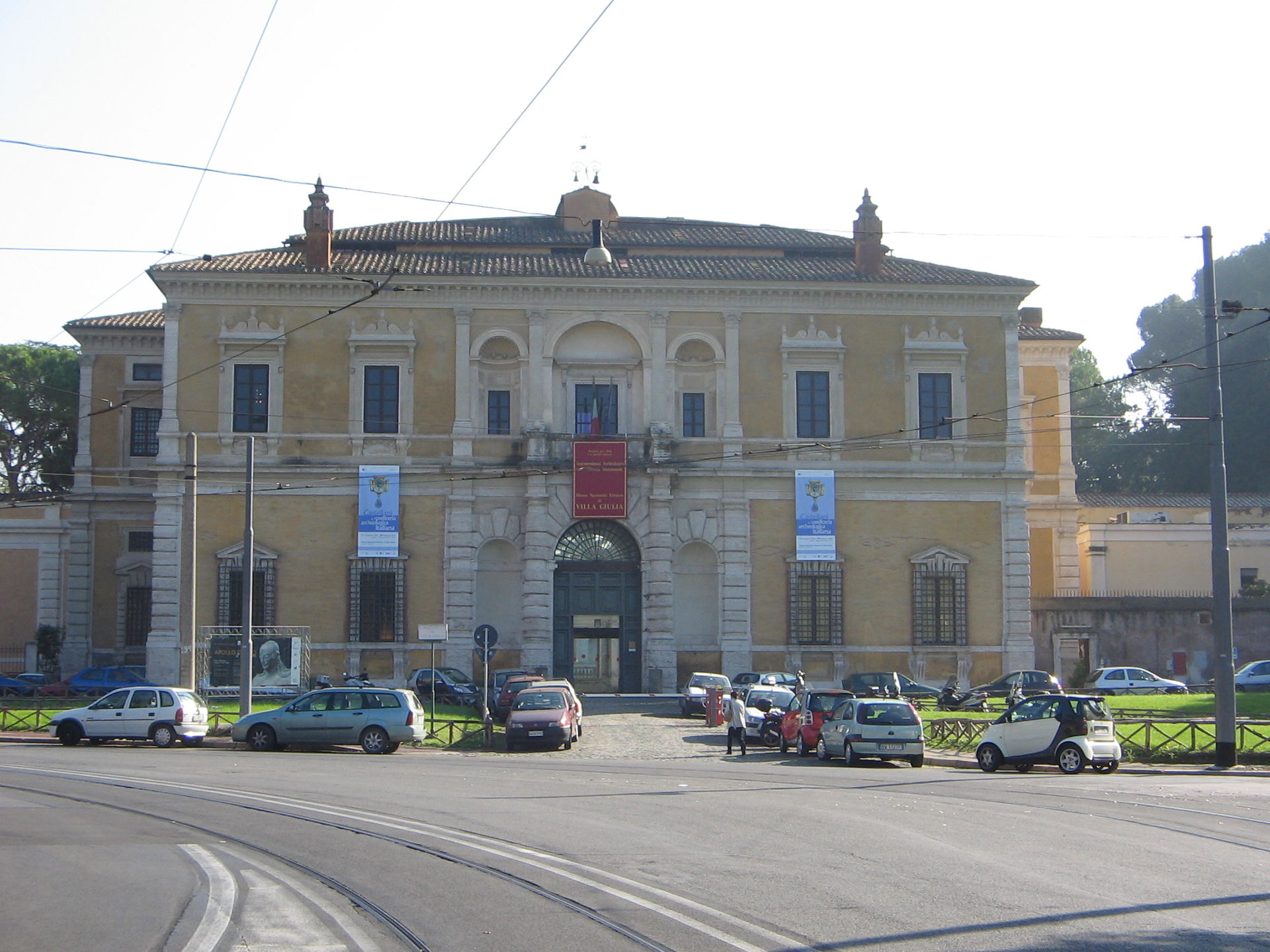Giovanni Maria Ciocchi del Monte, better known as Pope Julius III, was born 10 September 1487 in Monte San Savino, outside of Arezzo. Hoping to define his reign as Pope with significant church reform, Pope Julius III’s legacy was diminished by his rather short duration in the role (1550-1555).
Del Monte’s path to the Papacy began with his uncle, Antonio Maria Ciocchi del Monte, who worked his way up in the ranks of the Catholic church from Archbishop of Manfredonia (1506-1511) to Cardinal-Bishop of Palestrina in 1536 (he was even a star hostage during the 1527 Sack of Rome). It was Pope Paul III who had elected Antonio as Palestrina’s Cardinal-Bishop, and thus it was through this connection that Giovanni’s name was included among the list of potential candidates to replace Pope Paul III after his death in 1549.
With divisions in the church causing controversy, Giovanni was selected as a compromise candidate between factions. Assuming the Papacy on 7 February 1550, the new Pope Julius III accomplished several notable feats. Among them was the restoration of Catholicism in England in 1553. He also set out to encourage reform of the church, however this pursuit was less successful. Between 1551-1553 he worked to reestablish the Council of Trent to further modify church activities and behavior. When these efforts proved ineffective, Pope Julius III acquiesced and focused his attentions instead on artistic and architectural commissions as well as his lavish Villa Giulia. He died 23 March 1555 and was buried in Saint Peter’s Basilica.
Circle of Girolamo Sicciolante (after Sebastiano del Piombo), Pope Julius III, 1550-1600. Rijksmuseum, Amsterdam.
Portrait of Pope Julius III, illustrated in Onofrio Panvinio’s Onuphrii Panuinii Veronensis Fratris Eremitae Augustiniani. XXVII. Pontificum Maximorum elogia et imagines / accuratissime ad uiuum aeneis typeid delineata (image courtesy of Pitts Theology Library)
Vincenzo Danti, Pope Julius III, 1555. Bronze. Perugia.
Villa Giulia, Rome, built 1551-1553. Building designed by Giacomo Barozzi da Vignola; gardens and associated structures designed by Giorgio Vasari and Giacomo Barozzi da Vignola.



